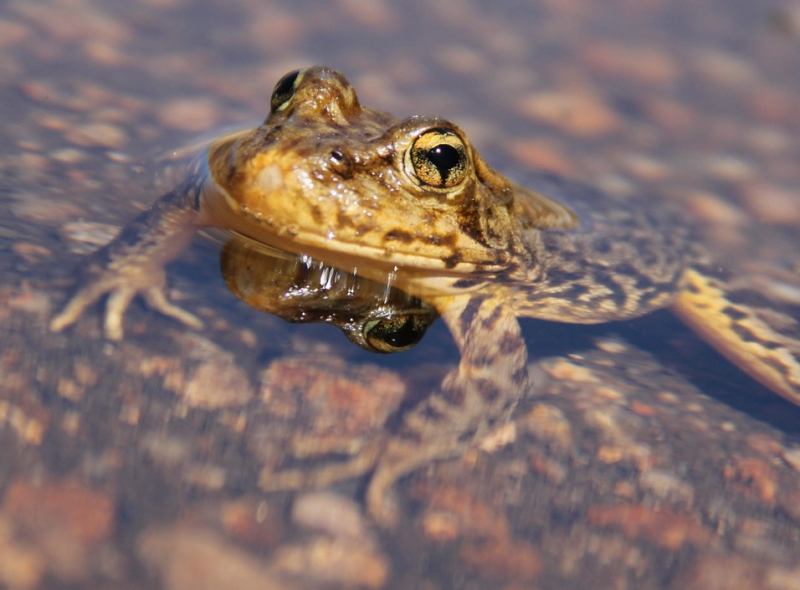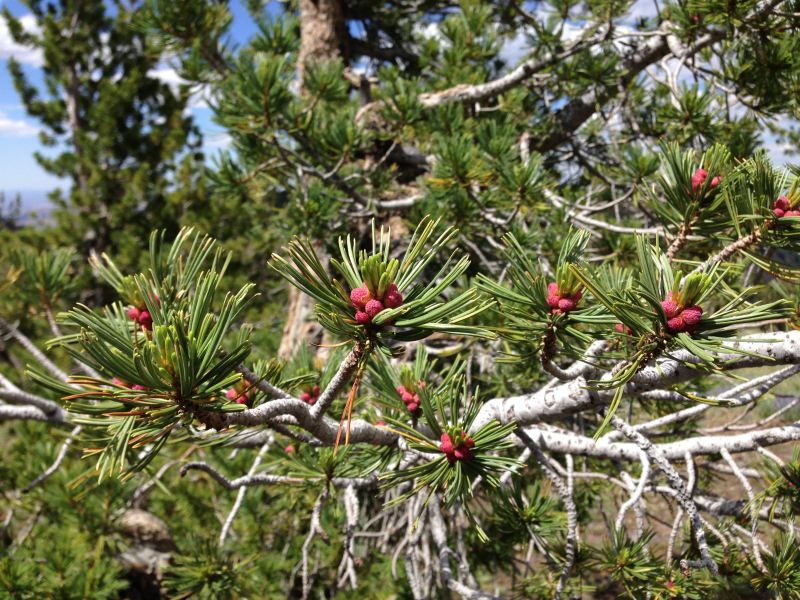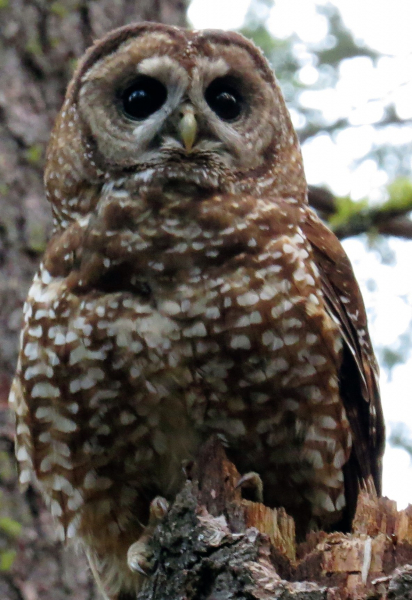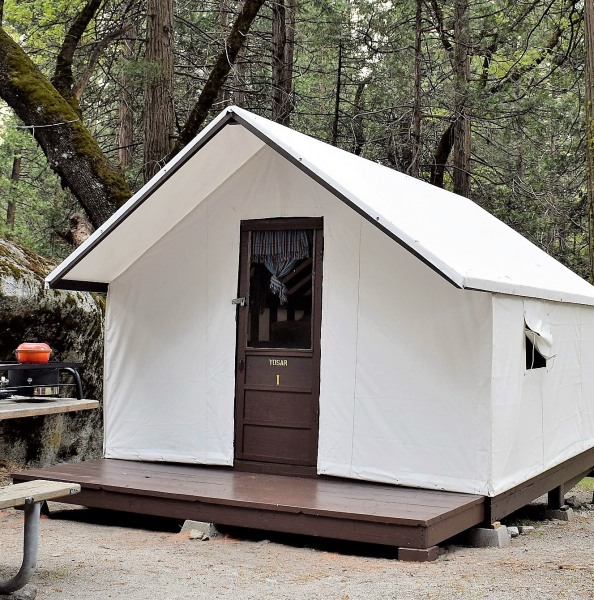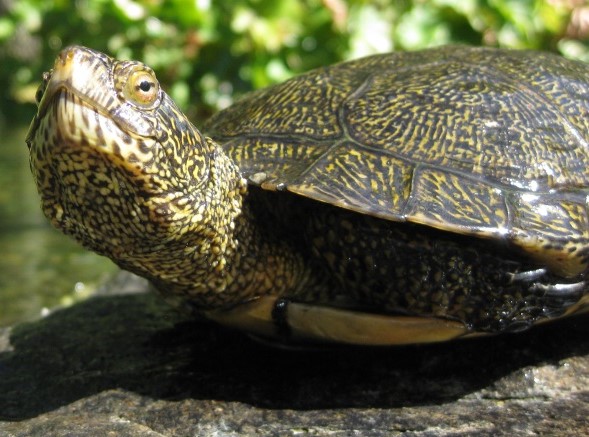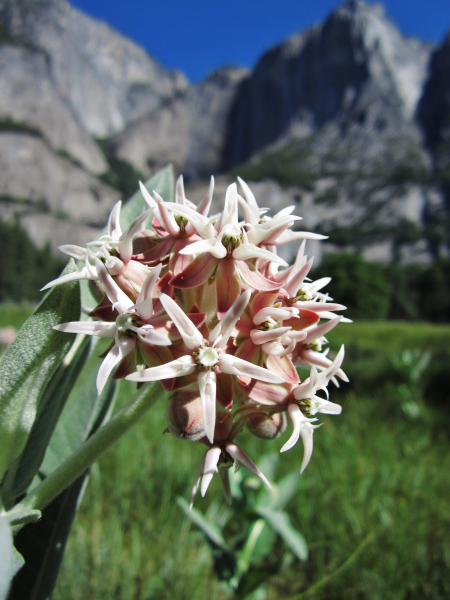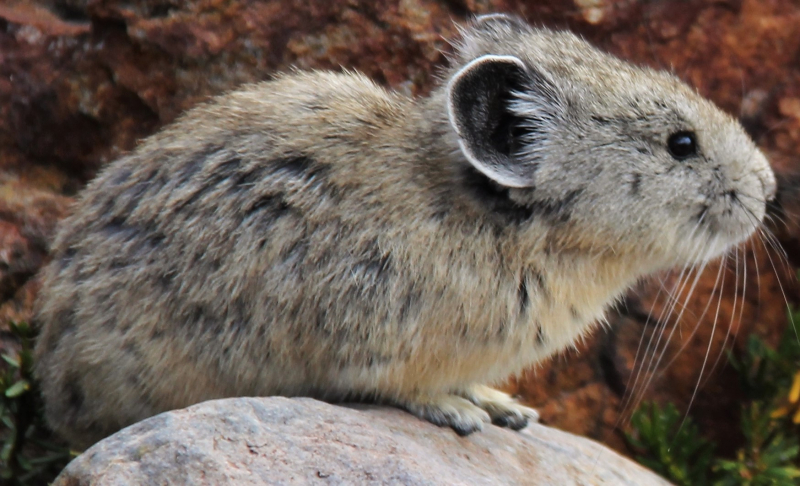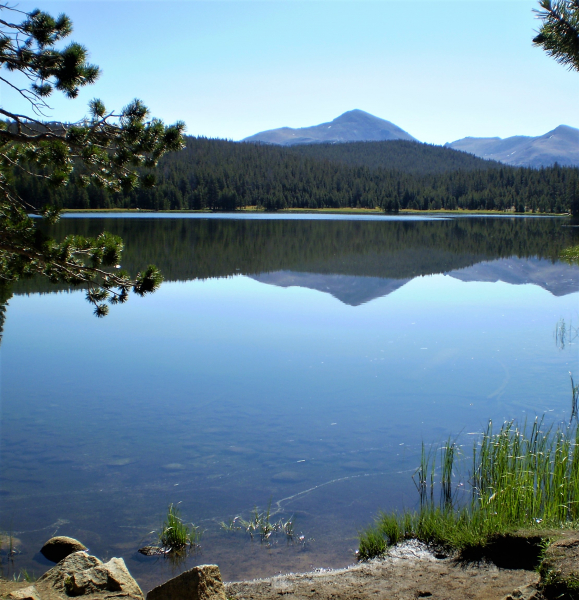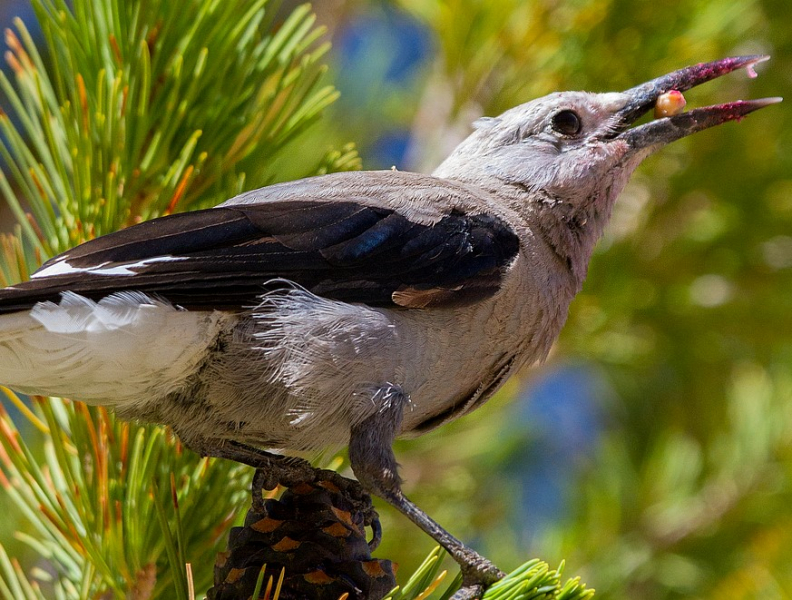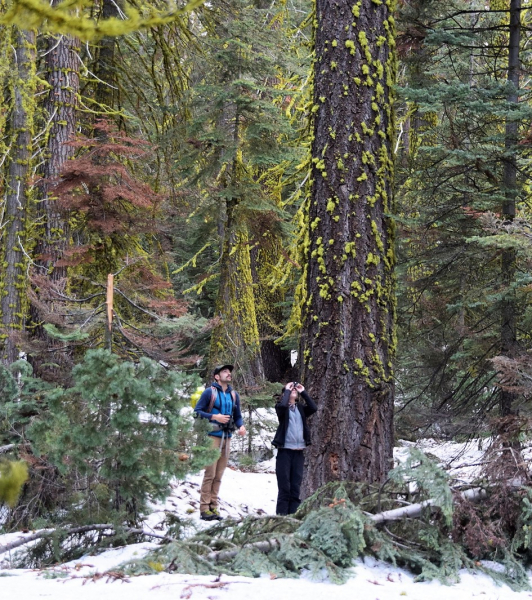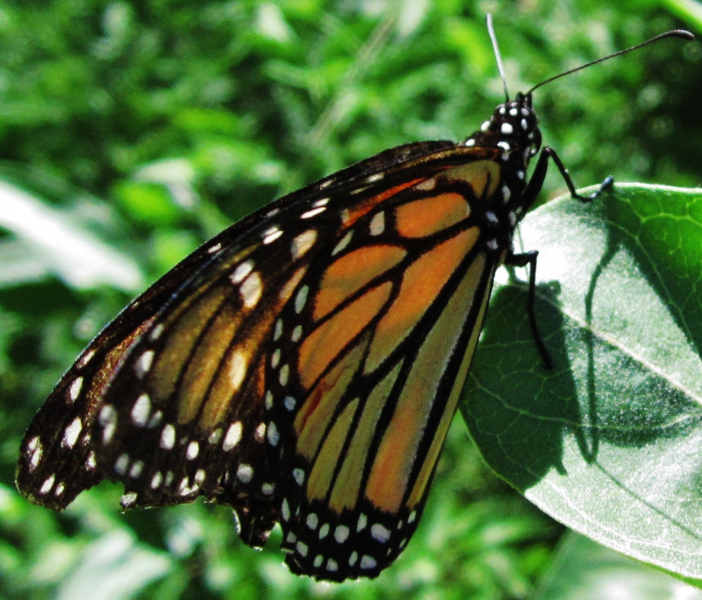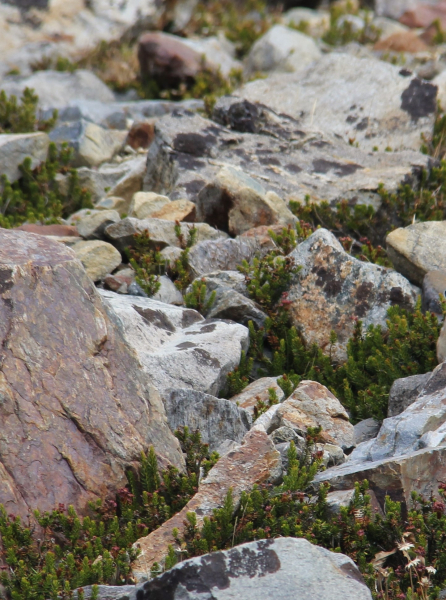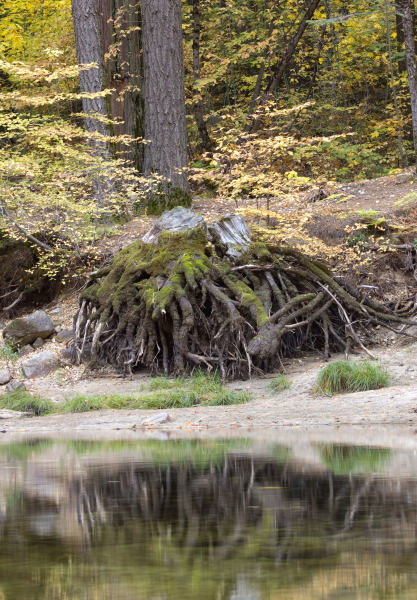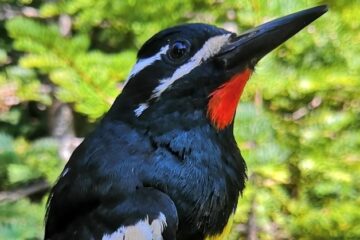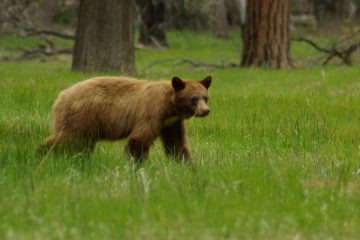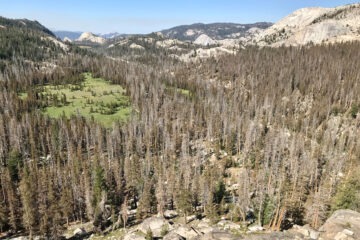Plenty of snow lingers in Yosemite’s high country, but lower elevations are in full summer mode … and ready for scientific field work! In the past few months, park researchers have been conducting careful surveys in Yosemite’s newest protected habitat, Ackerson Meadow, to gather information on the different animals that live there. They’ve already documented a rich array of life in the meadow, including owls, songbirds, bats, bears, bobcats, frogs and red-tailed hawks.
That donor-supported study got us thinking about Yosemite’s role as a haven for wildlife. In addition to meadows and wetlands, the park encompasses woodlands, rivers, lakes and rugged mountains — diverse habitats that provide homes for huge variety of animals (in total, the park supports more than 400 vertebrate species, plus plenty of insects). As habitats elsewhere are fragmented or destroyed, Yosemite serves as a refuge, a place where healthy ecosystems are protected and restored.
How much do you know about Yosemite’s resident and migratory species — and the habitats they depend on? Take our quick quiz to see if you can match each animal with its preferred environment. Heads up: We included one Yosemite denizen that isn’t exactly wildlife, but is wildly important in the park!
Scroll to the bottom to check your answers and learn about some of the habitat and wildlife projects our donors support.
Goes by: Sierra Nevada yellow-legged frog Eats: Insects, tadpoles Fun fact: These frogs can produce a garlicky scent to scare off predators. Donors make a difference: Restoring populations of an endangered amphibian |
|
Goes by: California spotted owl Eats: Small mammals, especially woodrats and flying squirrels Fun fact: These birds are monogamous, and sometimes go several years between nestings. Donors make a difference: Studying how wildfires have affected a special-status bird |
|
Goes by: Western pond turtle Eats: Insects, water plants, fish Fun fact: These skilled swimmers (and sun-bathers) can live up to 50 years. Donors make a difference: Releasing and monitoring turtles in Yosemite after a half-century absence |
|
Goes by: American pika Eats: Grasses, wildflowers Fun fact: These expert foodsmiths dry plants in the sun and store them for winter. Donors make a difference: Studying pika habitat and vulnerability to climate change |
|
Goes by: Clark’s nutcracker Eats: Pine seeds Fun fact: These birds can carry as many as 150 seeds under their tongues while stashing food for colder months. Donors make a difference: Long-running research program to record trends in avian demographics |
|
Goes by: Monarch butterfly Eats: Nectar (incl. milkweed, lilac and coneflower) Fun fact: These insects fly thousands of miles during annual migrations, but a short lifespan (6-8 months) means no individual makes a round trip. Donors make a difference: Planting native flora to make habitat more nourishing for monarchs and other pollinators |
|
Goes by: Search and Rescue (SAR) volunteer, SAR-siter Eats: Creative camp-stove concoctions Fun fact: These skilled volunteers devote six months (May-October) to supporting rescue missions in Yosemite. Donors make a difference: Renovating habitat in Yosemite Valley, and supporting Preventive Search and Rescue operations |
|
1 – D. Sierra Nevada yellow-legged frogs, a federally endangered species, typically live at high elevations, and rarely stray far from water. Through donor-supported efforts, scientists are working to bring back this once common Yosemite amphibian, in part by using environmental DNA (eDNA) to identify suitable lakes.
2 – E. California spotted owls live in old-growth forests, where they nest and roost in large trees and snags. Your support funds research on how this California Species of Special Concern is faring in the wake of wildfires that have burned swaths of its habitat.
3 – G. Western pond turtles prefer to live near lakes, streams and — you guessed it — ponds. In warm months, they soak up the sun on boulders and logs; as winter nears, they might burrow into the mud to hibernate. Last year, with support from a Conservancy grant, western pond turtles were swimming and basking in Yosemite Valley for the first time in 50 years; this year, scientists are releasing additional turtles and studying potential predators.
4 – F. Pikas live high in the mountains, often in talus (rocky debris), where they blend in easily with the boulders. You might not be able to spot them, but listen for their telltale chirp, especially if you’re hiking near Gaylor Lakes! While adept at thriving in cold habitats, pikas face a serious threat as alpine climates warm.
5 – A. Clark’s nutcrackers love whitebark pines — and the feeling is mutual. The nutcrackers use their beaks to break open the cones, and then bury the seeds in thousands of different caches. When winter falls, the birds relocate enough of the hiding spots to stay fed throughout the season; uneaten seeds grow into new pines.
6 – C. For these orange and black insects, native (not tropical) milkweed is a crucial habitat feature: It’s the only food source for monarch caterpillars. Park botanists are planting milkweed in the Valley as part of a donor-supported project to ensure that Yosemite is a haven for pollinators like butterflies, birds and bees.
7 – B. Silly scientific name aside, Yosemite’s Search and Rescue volunteers play a critical role in the park. They volunteer their time and technical skills to help with hundreds of emergency operations, from rescuing climbers to helping injured hikers. The “SAR-siters” live in canvas tent cabins at Camp 4. Thanks to donor-funded grants, six of the cabins have gotten an upgrade in recent years.
Want to stay in the loop on this year’s habitat and wildlife grants you can support in Yosemite this year? Sign up for our free monthly enewsletter, follow us on social media (we’re @yosemiteconservancy on Facebook and Instagram, and @YoseConservancy on Twitter), and keep an eye on our blog!

